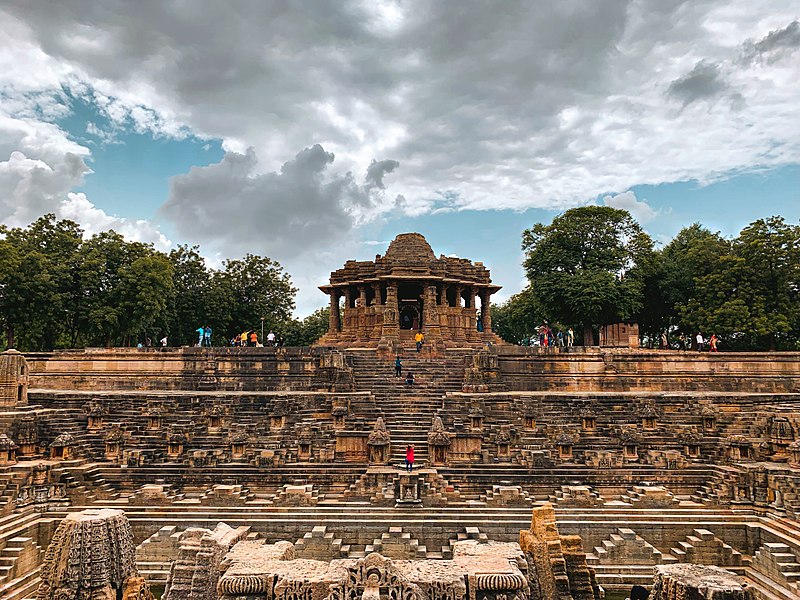Modhera Sun Temple (Modhera Surya Mandir), Gujarat

Address
Modhera Sun Temple (Modhera Surya Mandir) Mehsana – Becharaji Rd, Highway, Modhera, Gujarat 384212
Diety
Surya
Introduction
The Sun Temple is a Hindu temple dedicated to the solar deity Surya located at Modhera village of Mehsana district, Gujarat, India. It is situated on the bank of the river Pushpavati. It was built after 1026-27 CE during the reign of Bhima I of the Chaulukya dynasty. No worship is offered now and is protected monument maintained by Archaeological Survey of India.
Puranic Significance
The shrine proper of the Sun Temple was built during the reign of Bhima I of Chaulukya dynasty. Earlier, during 1024-25, Mahmud of Ghazni had invaded Bhima’s kingdom, and a force of around 20,000 soldiers had unsuccessfully tried to check his advance at Modhera. Historian A. K. Majumdar theorizes that the Sun Temple might have been built to commemorate this defense. On a block in western wall of cella, there is an inscription “Vikram Samvat 1083” upside down carelessly incised in Devnagari script which correspond to 1026-1027 CE. No other date is found. As the inscription is upside down, it evidences the destruction and reconstruction of the cella. Due to the position of the inscription, it is not firmly considered as the date of construction. On the stylistic ground, it is known that the Kunda with its corner shrines was built earlier at the beginning of the 11th century. The inscription is rather considered as the date of destruction by Ghazni instead of the construction. Soon after Bhima had returned to the power. So the temple proper, the miniature and the niche shrines in the tank were built shortly after 1026 CE. The dancing hall was added much later in the third quarter of the 12th century along with the gateways, the porch of the temple proper and the doorframes of the temple and the cella during the reign of the Karna.
Special Features
The temple complex has three components: Gudhamandapa, the shrine hall; Sabhamandapa, the assembly hall and Kunda, the reservoir. The halls have intricately carved exterior and pillars. The reservoir has steps to reach the bottom and numerous small shrines The temple complex has three axially aligned components; the shrine proper (garbhagriha) in a hall (gudhamandapa), the outer or assembly hall (sabhamandapa or rangamandapa) and a sacred reservoir (kunda) he three projections of the outer wall of Gudhamandapa had windows on each side and the east projection had the doorway. These windows had perforated stone screens; the northern is in ruins and the southern is missing. Pradakshinamarga is formed by the passage between the walls of Garbhgriha and the outer walls of Gudhamandapa. The roof of passage has stones slabs carved with rosettes. The Shikhara of it no longer exists.
Century/Period/Age
10th century A.D.
Managed By
Archeological survey of India.
Nearest Bus Station
Modhera
Nearest Railway Station
Mahesena
Nearest Airport
Ahmedabad (AMD)









